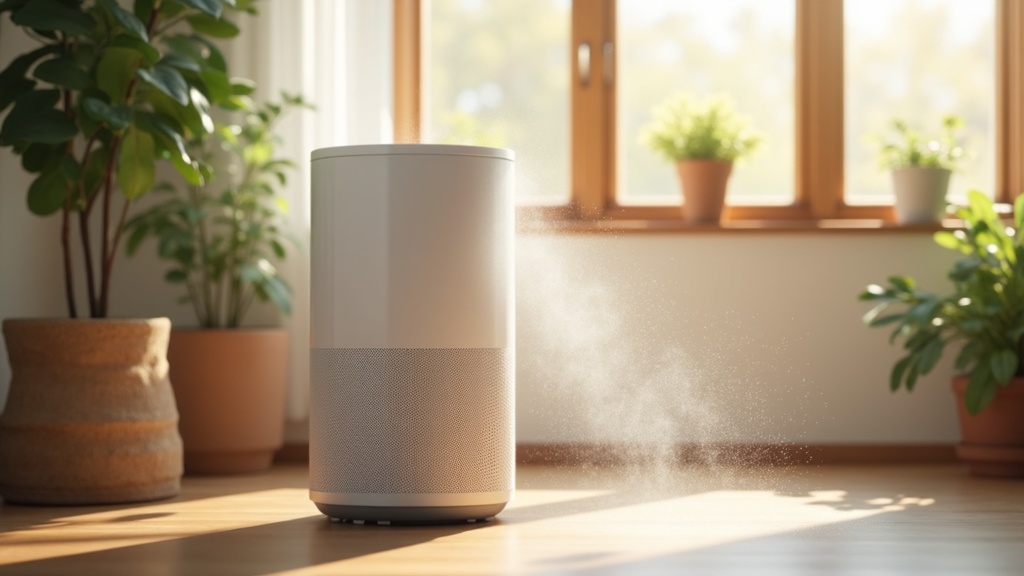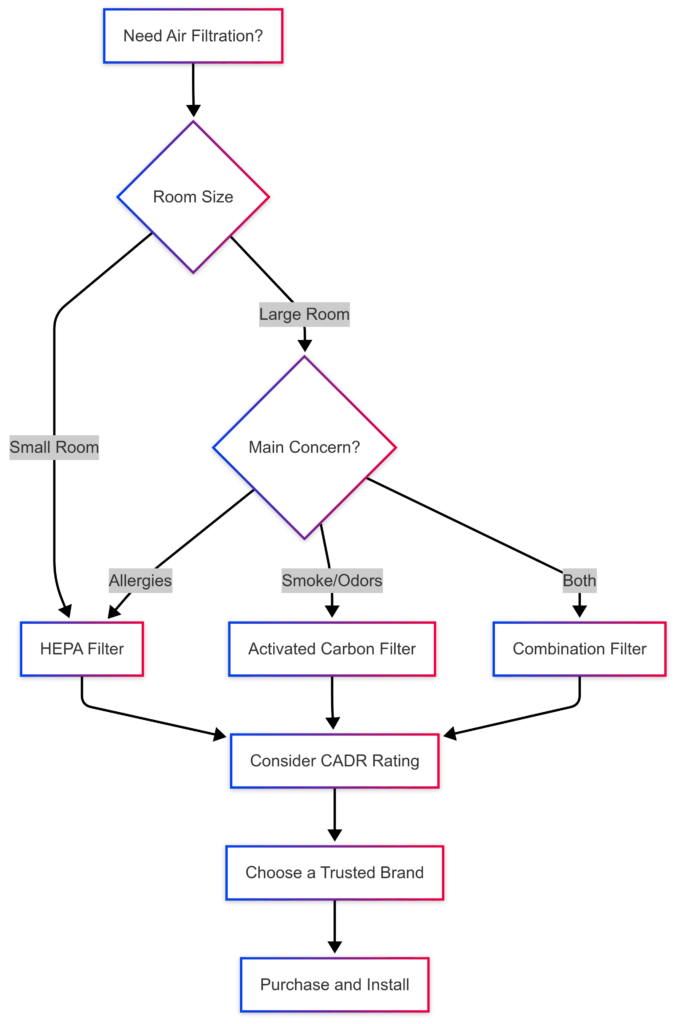Dealing with dust allergies at home can be a serious hassle. I’ve lived through endless sneezing fits, stuffy noses, and that “never truly fresh” air feeling that just won’t quit. Having a smart air purifier in the house is honestly one of the best upgrades I’ve made for my comfort and sanity. These clever devices use sensors, app controls, and specialized filters to clear out airborne dust and other triggers all day long, with no extra effort on your part.

Why Dust Allergies Can Ruin Your Day (and How Smart Air Purifiers Help)
Anyone with dust allergies knows how tough it can be just to breathe easily at home. Dust mites, their droppings, and other microparticles collect quickly, especially on bedding, carpets, and even inside your HVAC system. Regular cleaning helps, but it’s almost impossible to wipe down every surface and corner around the clock.
Smart air purifiers are built exactly for this challenge. They pull in air, run it through layers of filters—including HEPA and, in some models, activated carbon—and capture up to 99.97% of tiny pollutants, stopping the main troublemakers behind dust allergies. The coolest part is the smart features: sensors increase the purifier’s speed when dust levels spike, and apps notify you when it’s time to swap filters or tweak settings. It’s handy to have all this working in the background, freeing you from constantly worrying about your air quality or remembering air filter maintenance schedules.
Getting Started: Main Types of Filters and Features to Watch Out For
If you’re shopping for your first smart air purifier, getting a handle on filter types and unique features makes the process way easier.
- HEPA Filters: These are the workhorses for trapping dust, pollen, mold spores, and pet dander. True HEPA filters catch 99.97% of airborne particles as tiny as 0.3 microns. Got a lot of sneezing or itchy eyes? This is a must-have feature.
- Pre-Filters: These reusable filters grab larger bits like hair and lint, protecting the finer HEPA layer and extending the purifier’s lifespan.
- Activated Carbon Filters: Along with dust, if you’re sensitive to smells from cooking, pets, or smoke, this layer removes odors and certain chemicals from the air.
- Sensors and Auto Mode: Dust sensors track air quality in real time and instruct the purifier to ramp up or slow down, providing extra filtration when you need it most. Some even display air quality readings directly on the device or in a smartphone app.
- App Control and Voice Integration: Most smart air purifiers play nicely with Alexa, Google Assistant, or Apple HomeKit. Schedule purifying sessions, get air quality updates, and order replacement filters—all from your phone or with your voice.
How to Make the Most of Smart Air Purifiers (and Keep Allergies at Bay)
Adding a smart air purifier to your space can make a significant difference, especially when you fine-tune a few key aspects. Here’s what helps me keep the air clean and allergies in check:
- Pick the Right Size: Always check the “CADR” (Clean Air Delivery Rate), which tells you how good the device is at cleaning your room size. Buying one that is too small is like wearing flip-flops in a snowstorm; it doesn’t do much good!
- Place It Wisely: Locating your purifier in the bedroom or main living space helps most. It should go where you spend time, away from walls or objects that might block airflow.
- Change Filters Regularly: Filters that catch dust tend to become clogged after a few months. Regularly swapping them out keeps the purifier at peak performance. I always use filter subscription services to have replacements arrive right on schedule, so I don’t forget.
- Sync with Other Smart Devices: If you have smart thermostats or humidifiers, connect them all for a more comfortable home. Lower humidity helps prevent dust mites from spreading.
- Check Air Quality Trends: Use your purifier’s app to track how clean your air is over time. Spikes on certain days can signal you to step up cleaning or check household filters.

What to Look For Before You Buy a Smart Air Purifier
Not all allergens are created equal, so picking the best purifier comes down to a handful of real-world details. I’ve tried several models, and here’s what truly matters:
- Filtration Performance: Always pick “True HEPA” filtration; don’t settle for “HEPA-like.” It can make all the difference against microscopic allergens.
- Noise Levels: For bedrooms or offices, opt for quieter models (less than 50 decibels on the lowest setting). Sleep or quiet modes are a bonus, slowing the fan without reducing cleaning power.
- Filter Availability: Make sure it’s easy to find replacement filters for your machine. You don’t want your device flashing a “replace filter” warning and scrambling to buy one.
- Energy Use: Most are efficient, but Energy Star-certified models will save you more pennies if you plan to run them all day.
- Connectivity: Choose WiFi or Bluetooth-enabled units with a simple-to-use app. Integration with your smart home gear lets you automate the purifier’s routines or control it by voice.
My Favorite Source for Smart Air Purifier Filters
When you’ve invested in a purifier, keeping fresh filters on hand is critical. I rely on FiltersFast.com for my supply. Their Home Filter Club subscription makes life easier—filters show up exactly when they’re needed. That way, I don’t forget schedules or order the wrong thing.
Common Issues (And Easy Fixes)
- Forgetting Filter Changes: Clogged filters cut the cleaning power and let dust sneak back in. Set reminders, use app notifications, or join a subscription to handle this automatically.
- Poor Placement: A purifier hidden behind furniture can’t do much. Put it somewhere with good airflow—ideally near sources of dust—for maximum cleaning effect.
- High Power Costs: Utility bills spiking? Use “Auto” mode so your purifier only increases speed when indoor air drops in quality. Look for energy-efficient models for long-term use.
- Not Running Often Enough: Only switching on a purifier during allergy attacks misses the point. Dust gradually builds, so running the unit continuously (especially in allergy seasons) leads to noticeably fresher air.
Real-Life Benefits: Fresher Air, Fewer Allergies, and a Happier Home
Putting a smart purifier system in my home paid off quickly. I noticed a big drop in sneezing and less stuffy nose issues. My sleep’s less disturbed, and pet smells don’t stick around. Visitors with allergies love it, and I spend less time cleaning since dust gets trapped in the filters rather than floating around.
Frequently Asked Questions
How often should I run my smart air purifier for the best results?
Running your purifier every day is the best option, especially if you have allergies. 24/7 filtration keeps the air clean all the time, and most modern purifiers won’t drive up your power bill by much.
Do I need a purifier in every room?
Nope, not always. Begin with the room where you spend the most time, like the bedroom or main living space. If you’ve got a large home, add a second or third unit for coverage.
Can a purifier handle pet dander and pollen?
Yes! HEPA filters are built to catch pet dander, pollen, and even mold spores, along with dust. If you have pets, prioritize models with a strong prefilter for fur and fuzz, too.
How will I know when it’s time to swap out the filter?
Smart purifiers usually have indicator lights or app notifications. Changing filters every 3-6 months (based on the model and air quality) will keep things running smoothly.
Wrapping Up: Why Smart Air Purifiers Deserve a Spot in Your Home
Smart air purifiers are a breakthrough for anyone tired of fighting dust allergies and chasing after clean air. Their controls are simple, monitoring happens in real-time, and filter options are flexible—this all makes breathing easier, finally doable. If this tech is new for you, start with a solid model and let a subscription from FiltersFast.com handle filter swaps. Less worry and fewer sneezes are only a smart device away. Don’t let dust allergies rule your home anymore; cleaner air and comfort are right within reach.
